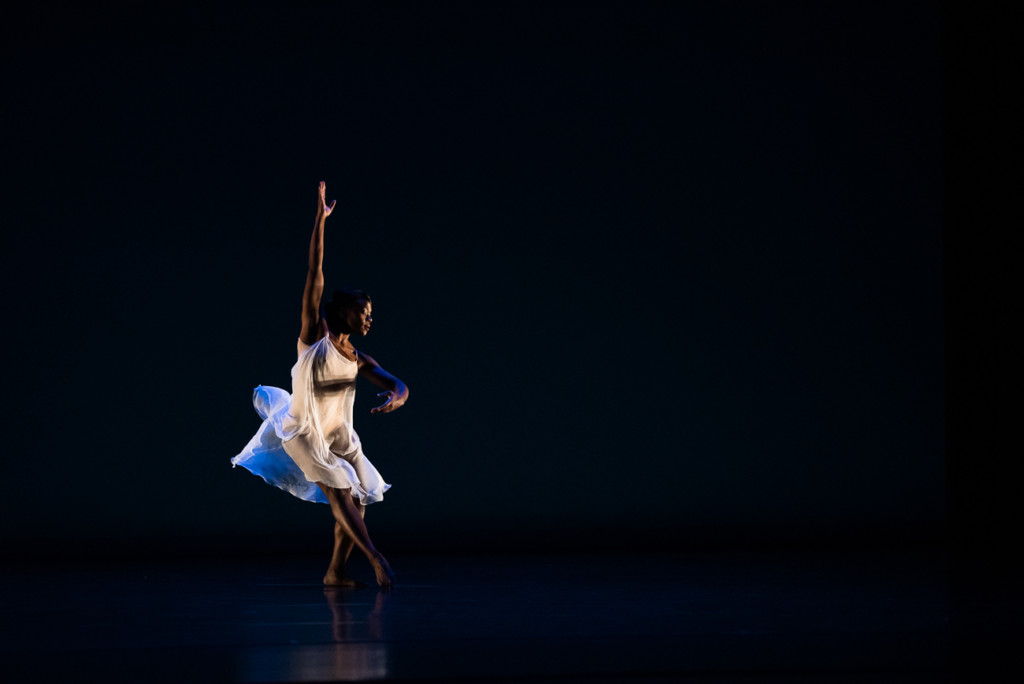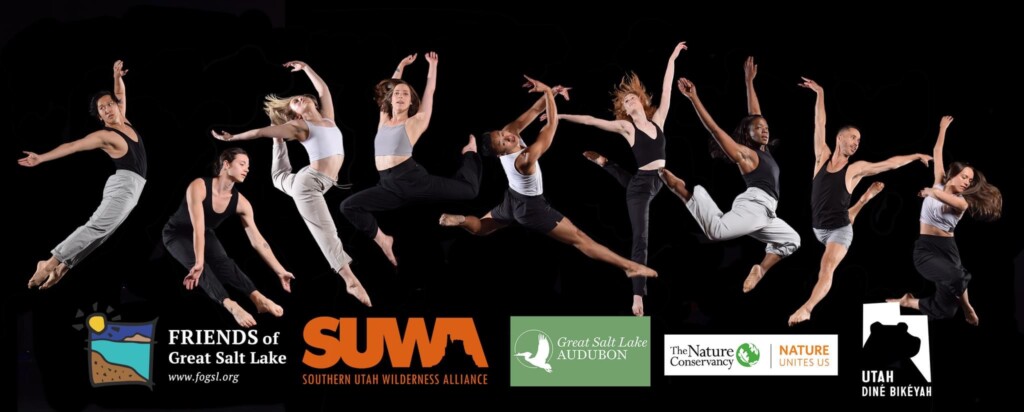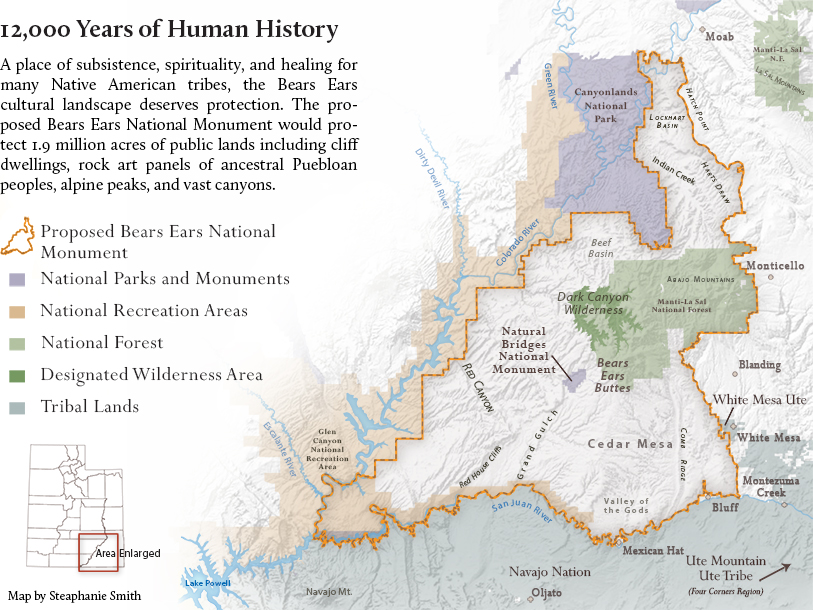With birds, rivers and the Bears Ears National Monument in Utah as the creative anchors, Repertory Dance Theatre (RDT) will close its regular portion of its 57th season with Flight, featuring two existing works that are being performed for the first time by the company and a revival of a 2017 commissioned piece by choreographer Zvi Gotheiner.
Dancing The Bears Ears, rich in metaphorical physiology and heartbeat of the massive natural monument in southern Utah, is being returned to the stage after its premiere six years ago.
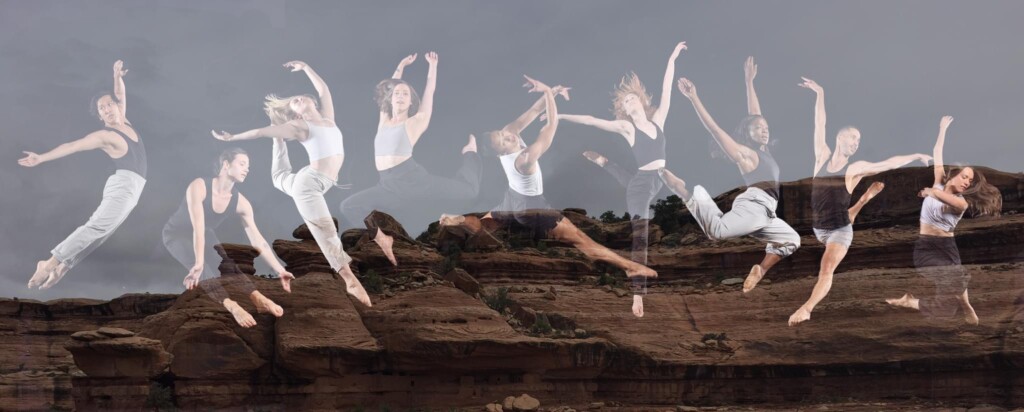
Much has happened since that 2017 premiere. In the spring of 2017, the company, along with Gotheiner and dancers from his New York-based company (ZviDances), traveled to the Bears Ears National Monument as the opening workshop for the creative process. Meanwhile, Ryan Zinke, then U.S. Secretary of the Interior during the Trump Administration, was in the area, gathering evidence to reverse the monument designation that former President Obama had approved near the end of his second term. Fortunately, the Biden Administration, with U.S. Secretary of the Interior Deb Haaland, restored the designation last year. There also is greater awareness of the Native American sovereignty and stewardship of these lands.
There have been other developments as well. Only three of the dancers remain from the group which premiered the work. For Gotheiner, who suffered a stroke and has recovered solidly, this is his first time back in the studio and his first trip outside of New York since his illness, working with the dancers for this week’s performances.
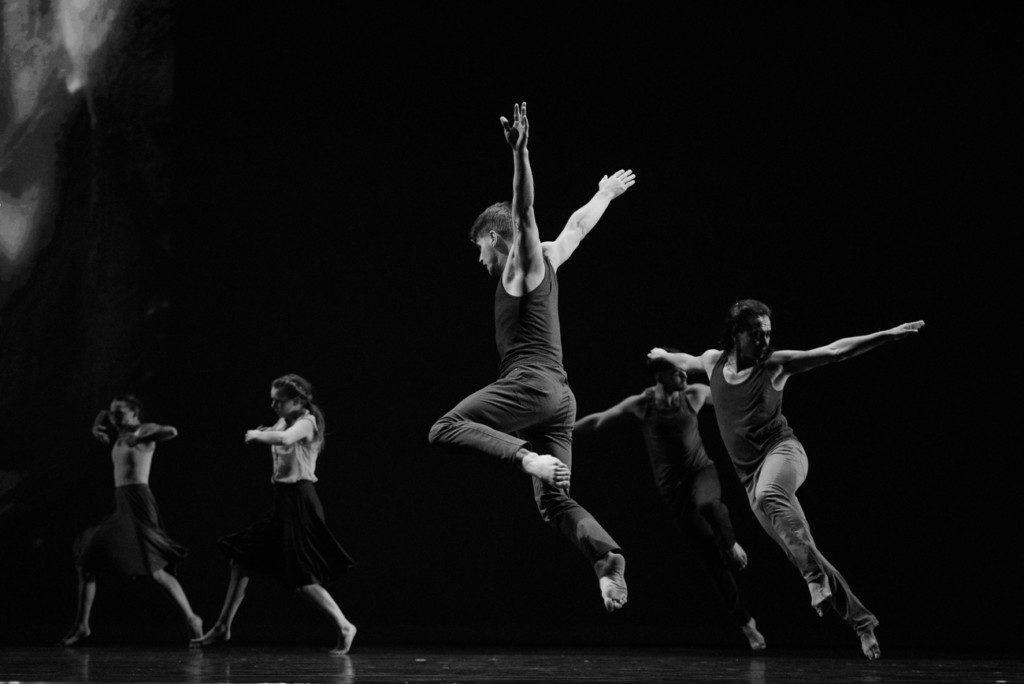
When the group visited the land six years ago, their stops included the Fry Canyon Ruin, the steep switchbacks of Moki Dugway, a kiva at the Cave Tower Ruin, a hike at the Procession Panel and a community gathering in Bluff Utah. They also were accompanied by Navajo and Diné guides. According to Linda Smith, RDT’s artistic director, the dancers talked on the first day of their workshop how they already were being changed in understanding why this land is sacred.
In a 2017 interview with The Utah Review, Gotheiner, who regularly visited many of the state’s natural sites ever since his first collaboration with RDT in 1993 (Erosion), recalled that Scott Killian, his frequent music collaborator who composed the score for the new work, was unable to accompany the group but arrived as everybody was returning. “He interviewed my company members and then later the RDT dancers and he was so touched by how everyone described their experience. It was phenomenal,” Gotheiner explained. “He got it immediately.”
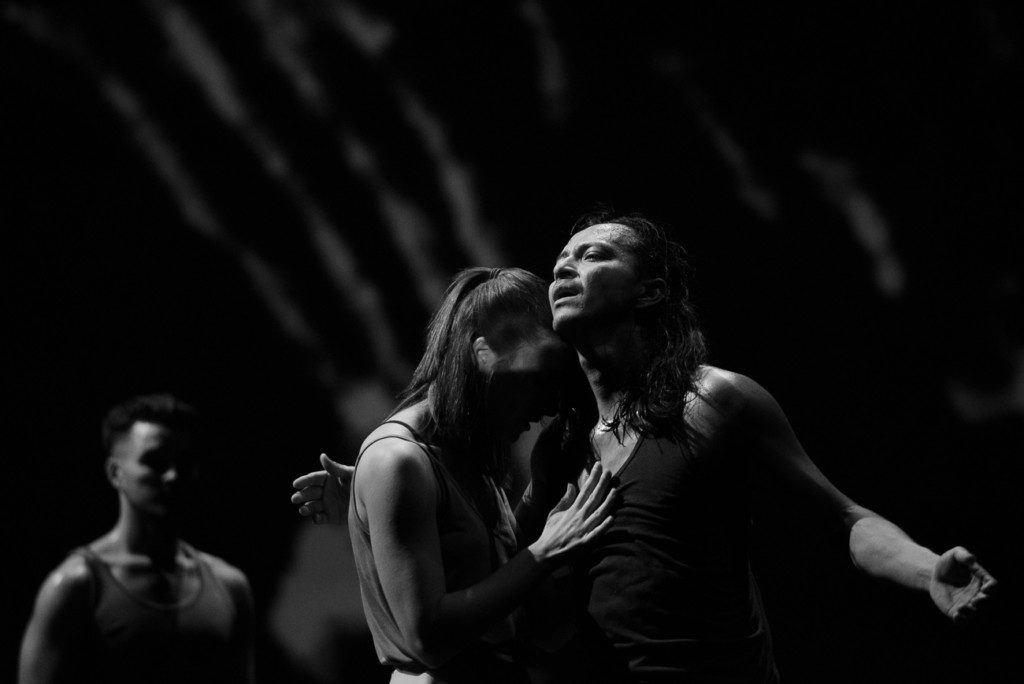
Incidentally, Smith, in a recent interview with The Utah Review, emphasizes an important point: “It is not a representational work meant to imitate or impersonate Native American people or culture.” She adds, “It is a dance about how this incredible sacred landscape healed us, and brought us into a harmonious place. The dance is a ‘new ritual’ to raise consciousness about the significance of the extraordinary area.”
Gotheiner was moved by the instinctive sacredness of land. In that same 2017 interview with The Utah Review following a rehearsal where the dancers worked for the first time with Killian’s impressive musical score, he talked about his own transition from a “farm boy” (born in an Israeli kibbutz) to “city mouse,” living in New York City, “a different kind of jungle,” he added. Gotheiner welcomed the opportunity to come here, “because I know how it touches the soul.”
At Bears Ears, perhaps Gotheiner’s most centralized epiphany for the new work came unexpectedly. The group had planned to hike up the canyon and observe petroglyphs but he knew that his knees were not up to the rigors of an uphill hike. “I knew I wasn’t going to make it so I went down alone into the canyon and to meditate,” he recalled at the time. “I felt truly alone in nature and I thought to myself that I am complete with my life. If I would have suffered a snake bit then, I wouldn’t have minded it. I fell asleep, as soundly as a baby.”
It also allowed him to reconnect to the “farm boy” side of his experience. Creating dance in New York City necessitates accessing different cultural references, he explained, but in Utah, Gotheiner could see how the dancers individually crafted their own relationship to nature and the existential realities of that in their own lives.
While the work sidesteps the political battles, Dancing The Bears Ears reflects the spectrum of the various sacred relationships that have come and gone over a long time. The campaign for designating the national monument was an unprecedented effort, as a coalition of five tribal governments – Navajo, Hopi, Ute Indian Tribe, Ute Mountain Ute, and Zuni – were centrally involved. Previously, Native American tribes had been consistently excluded or relegated to the back bench when it comes to discussing public lands.
“We wanted to explore why do some people see this land as sacred,” Smith said in 2017. Gotheiner was even more pointed: “Only when some disconnect from some part of their humanity can they think about abusing or disrespecting nature.”
Smith says that Dancing the Bears Ears is a major part of a creative mission that RDT has pursued since the 1990s when it began commissioning works about human connections to land and water.
RDT also will present for the first time two works which have been added to the company’s repertoire and both are respectively from choreographers who have other works in the RDT catalog.
The first is The Winged (1966) by José Limón, which sets in choreography the flight patterns of birds and the innate human desire to experience the sensation of flying. With three guest dancers augmenting the company’s core of nine performers, the work has been restaged by Nina Watt, who toured nearly three decades with the Limón Dance Company and has been described as “the perfect Limón dancer.”
The Limón Dance Company performed the work for the first time 57 years ago at the Connecticut College American Dance Festival. With music by Lief Ellis, the metaphorical work is set in eight sections, featuring the ensemble as well as solos, duos and smaller groups at various points. Some of the movements titled include references to Eros, Pegasus and Sphinx.
Based on the Langston Hughes poem The Negro Speaks of Rivers, Donald McKayle’s I’ve Known Rivers, a 2005 work will be performed for the first time on the RDT stage. A solo piece set to music by Margaret Bonds with vocalist Darryl Taylor, the work will be performed by Ursula Perry, the most senior member of the current RDT dancers.
McKayle dedicated the work to Pearl Primus, a Trinidad native who played a major role in introducing African dance to American audiences during the 20th century, and to the memory of dance artist Janet Collins.
The Hughes poem is hugely significant. Written in 1921 when the poet was just 17, it would become his first published work. He wrote it when he crossed the Mississippi River on his way to visit his father in Mexico.
Hughes connects four rivers — Euphrates, Congo, Nile and Mississippi — in tracing the journey of Africans and African Americans through civilizational history. As one verse indicates, “I’ve known rivers ancient as the world and older than the flow of human blood in human veins/My soul has grown deep like the rivers.”
“The rigor and history that is embedded within the creation of steps. The specific meaning of each movement is open to interpretation by whoever is performing,” Perry wrote. “The ever-changing wave of emotion that is intrinsic throughout, takes both the performer and the viewer on a powerful journey.”
Featured in Flight are the company’s dancers: Lauren Curley, Caleb Daly, Daniel Do, Lindsey Faber, Elle Johansen, Jonathan Kim, Jacob Lewis, Megan O’Brien and Ursula Perry. The three guest dancers for The Winged are Ruby Cabbell, Lauren Gresens and Kara Kormarnitsky.
Performances will be Thursday through Saturday (April 20-22), daily at 7:30 p.m. in the Jeanné Wagner Theatre at the Rose Wagner Center for Performing Arts.
Prior to the Friday evening performance, RDT will present a short symposium, Preserving Our Land, Water and Culture, beginning at 6:30 p.m. Participants include Carly Biedul from the Great Salt Lake Institute at Westminster College, Davis Filfred from Utah Diné Bikéyah and Laura Peterson from Southwestern Utah Alliance.
FRIENDS of the Great Salt Lake, Great Salt Lake Audubon, The Nature Conservancy, Utah Diné Bikéyah, and Southern Utah Wilderness Alliance will be present at the performance to provide information to put the evening’s performance into context regarding critical environmental issues. For more information about tickets and events, see the RDT website.


